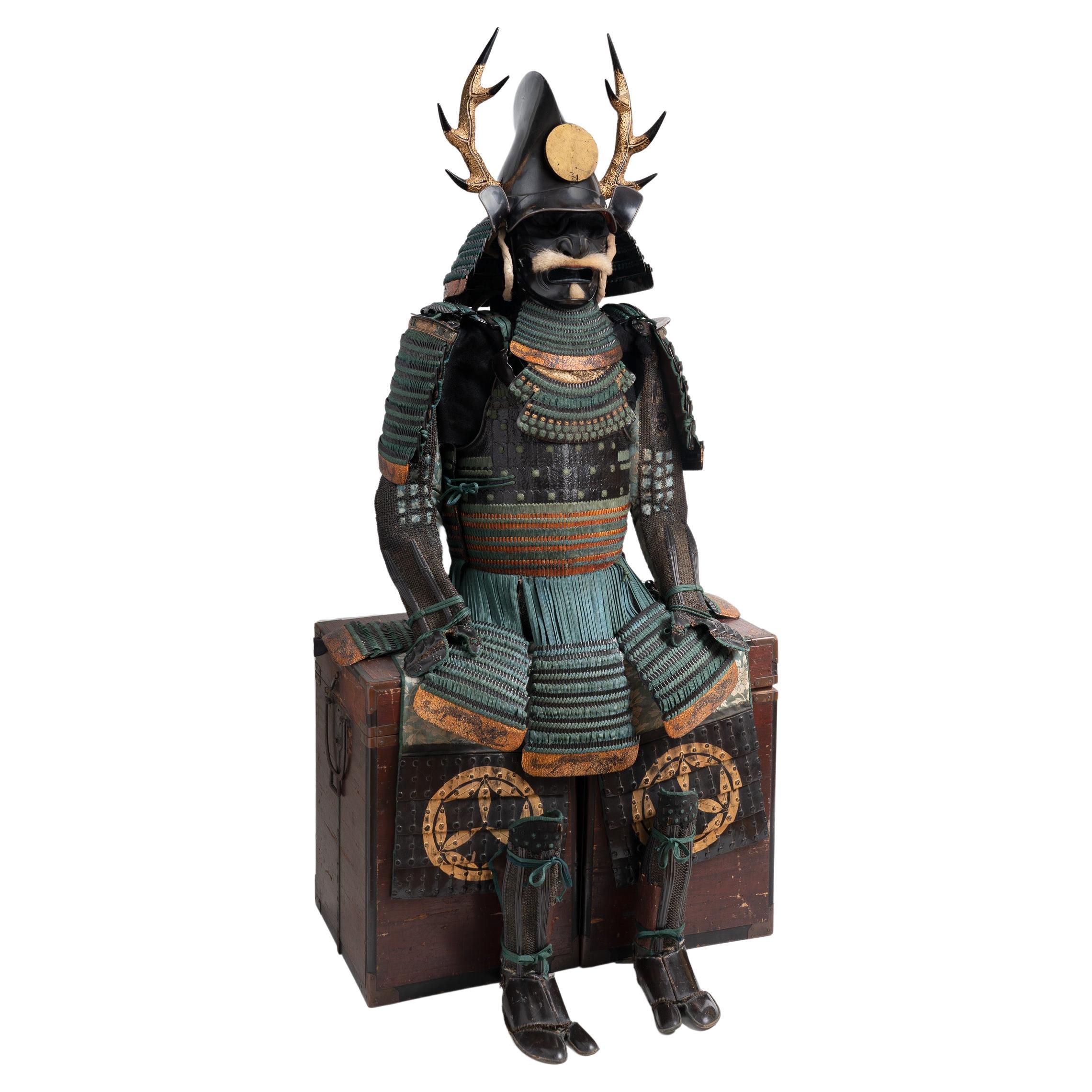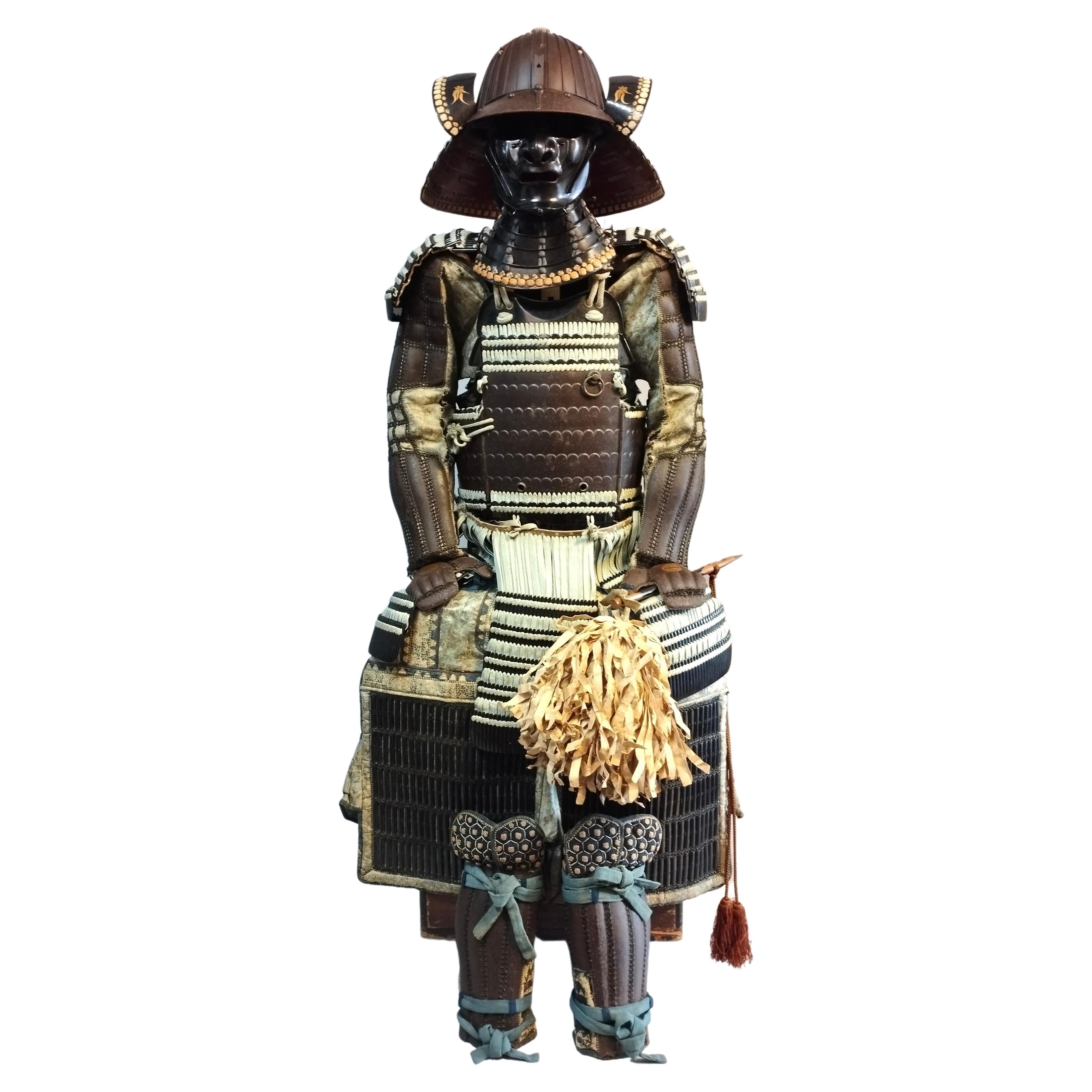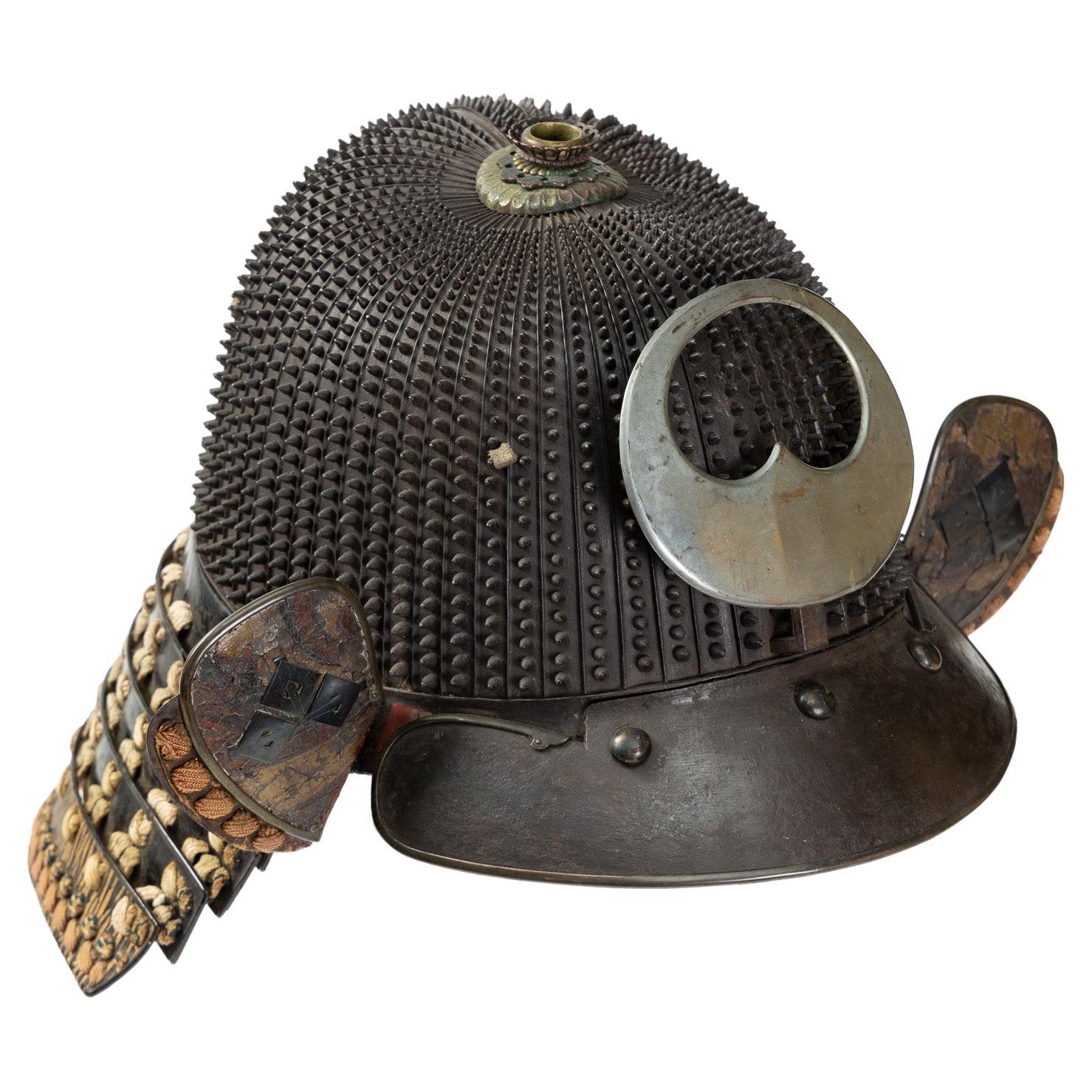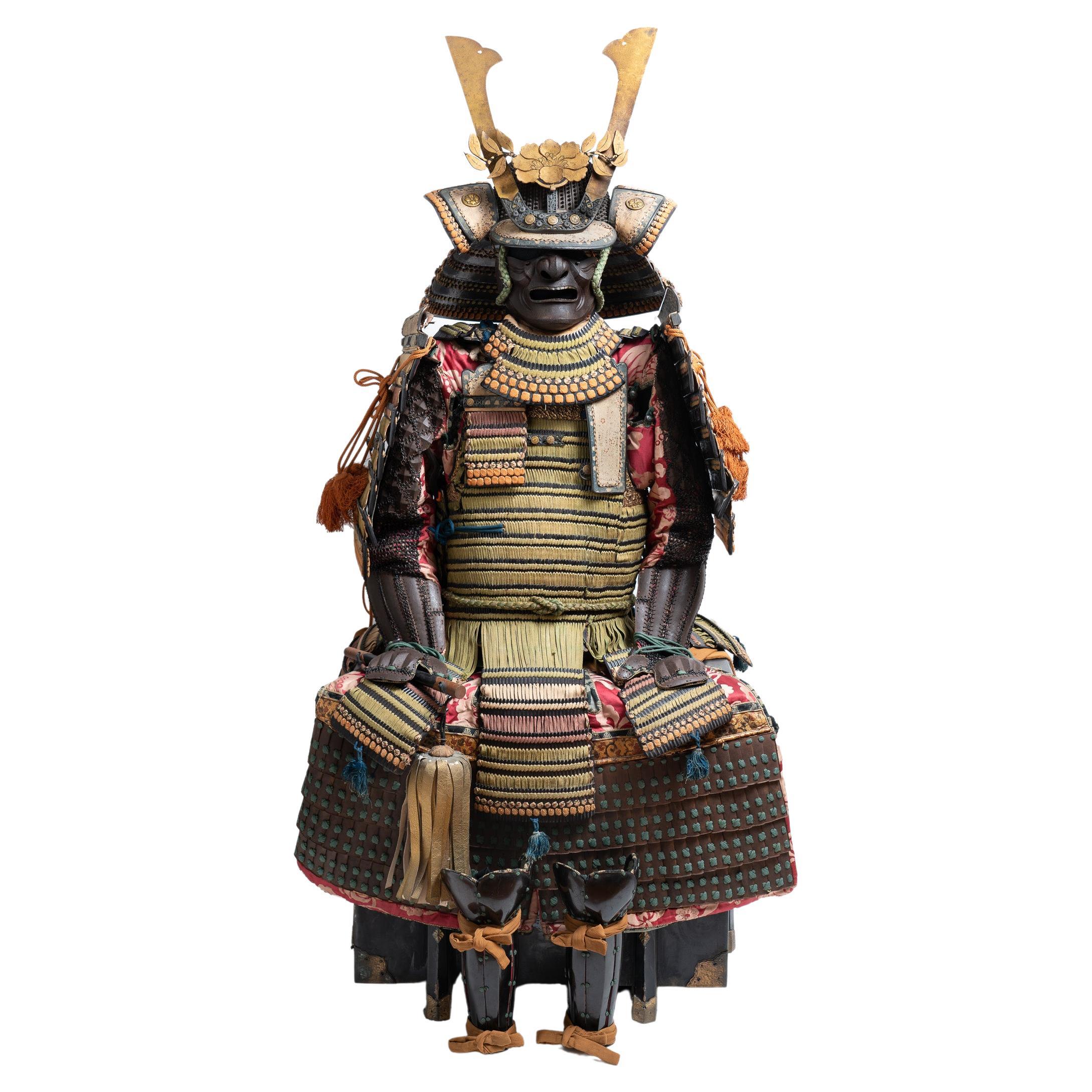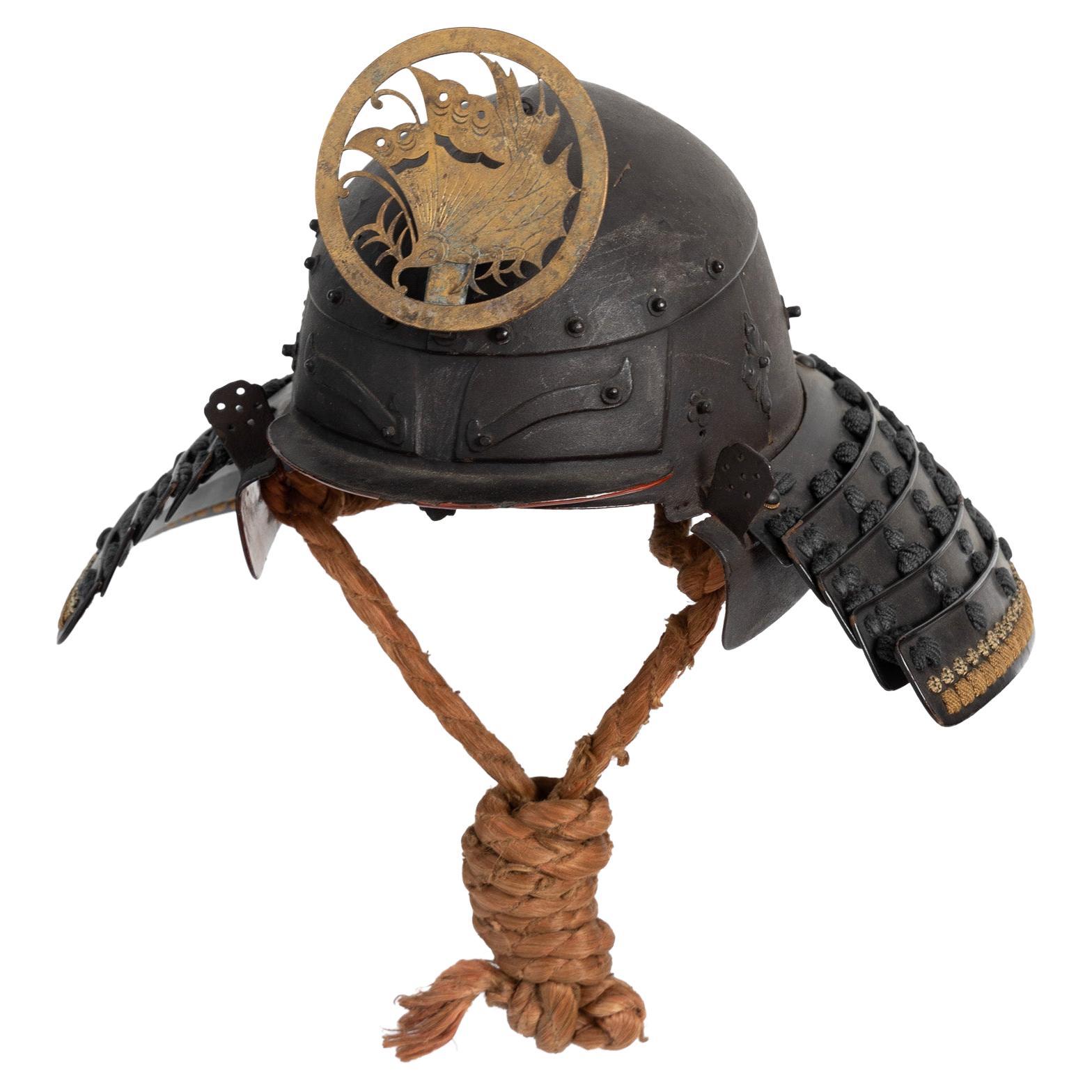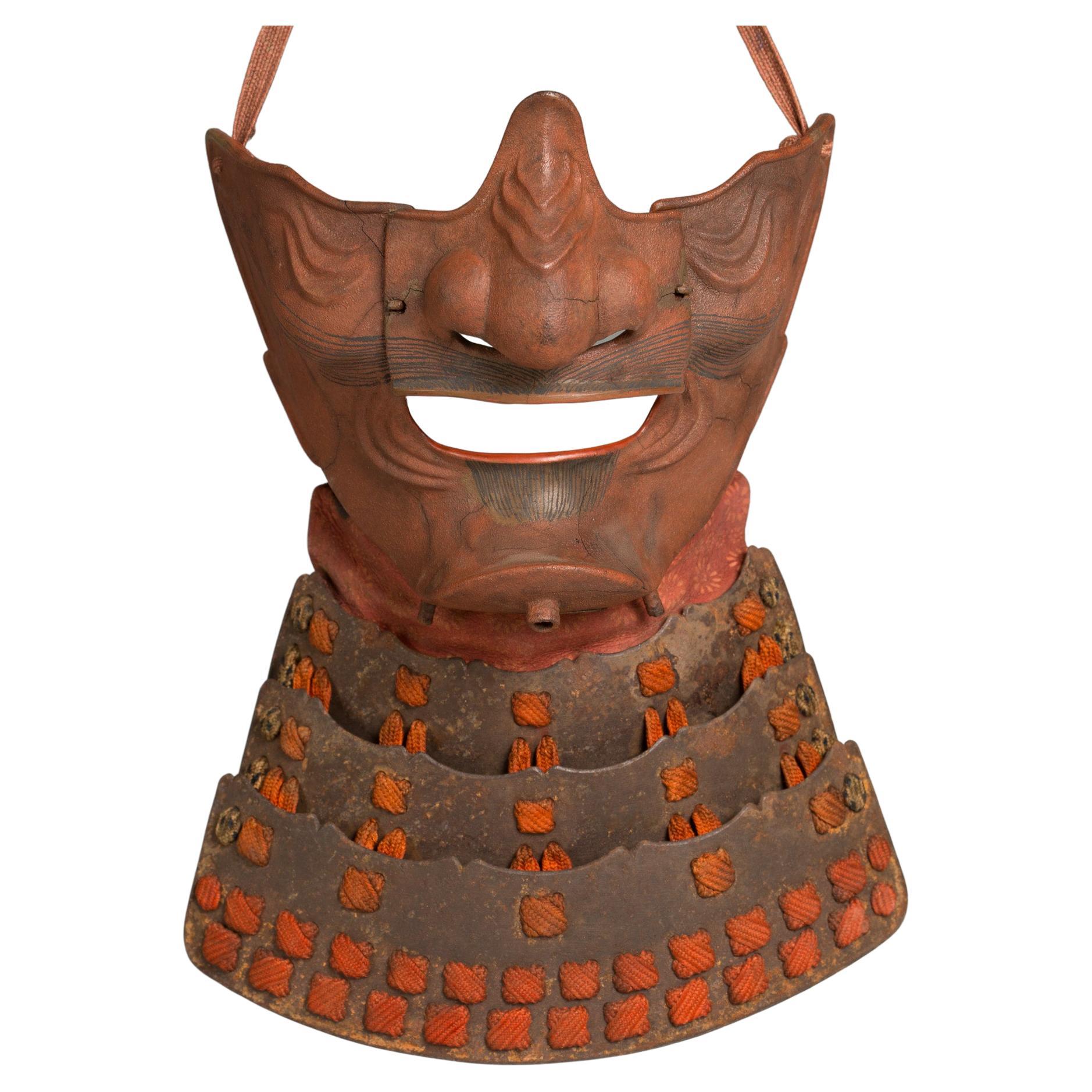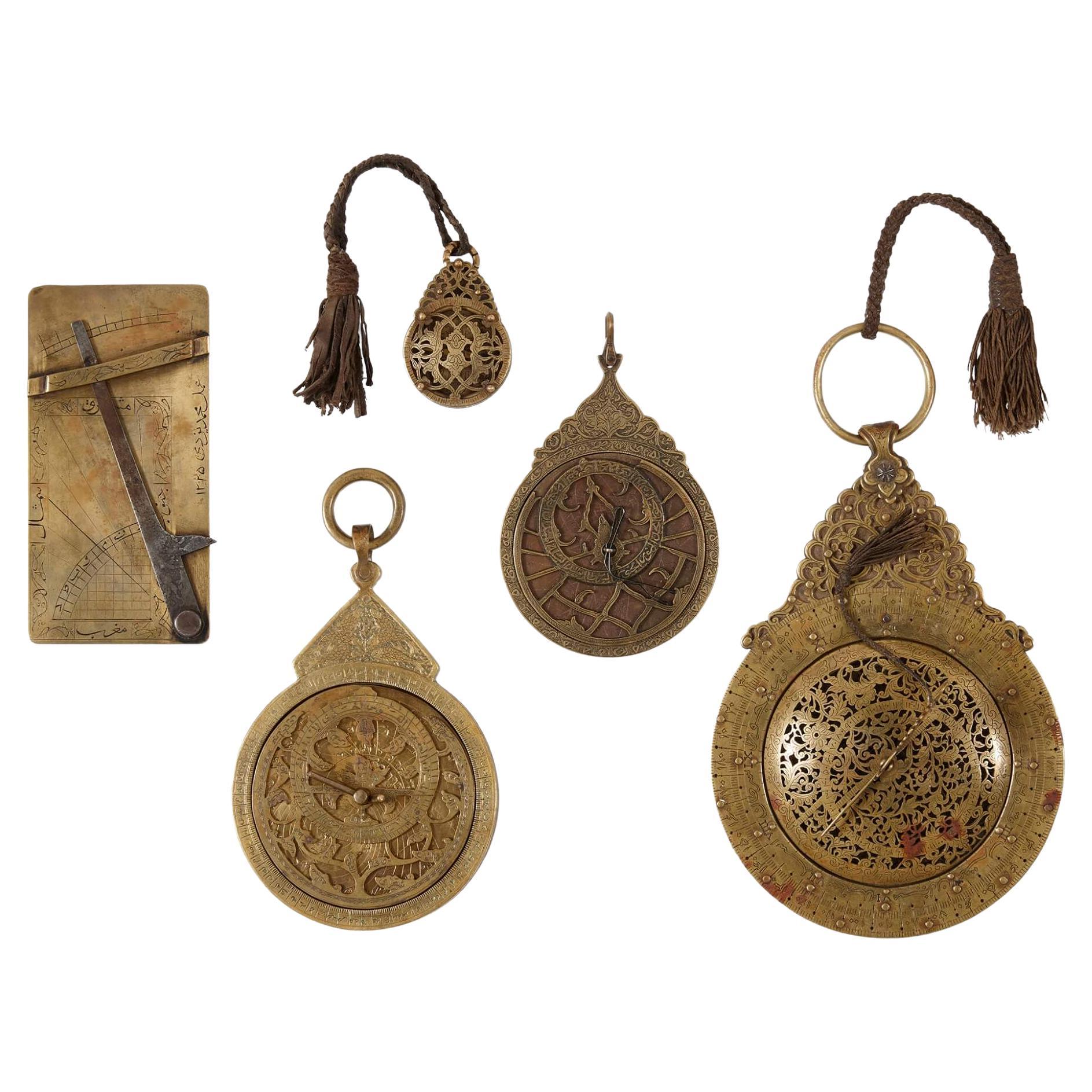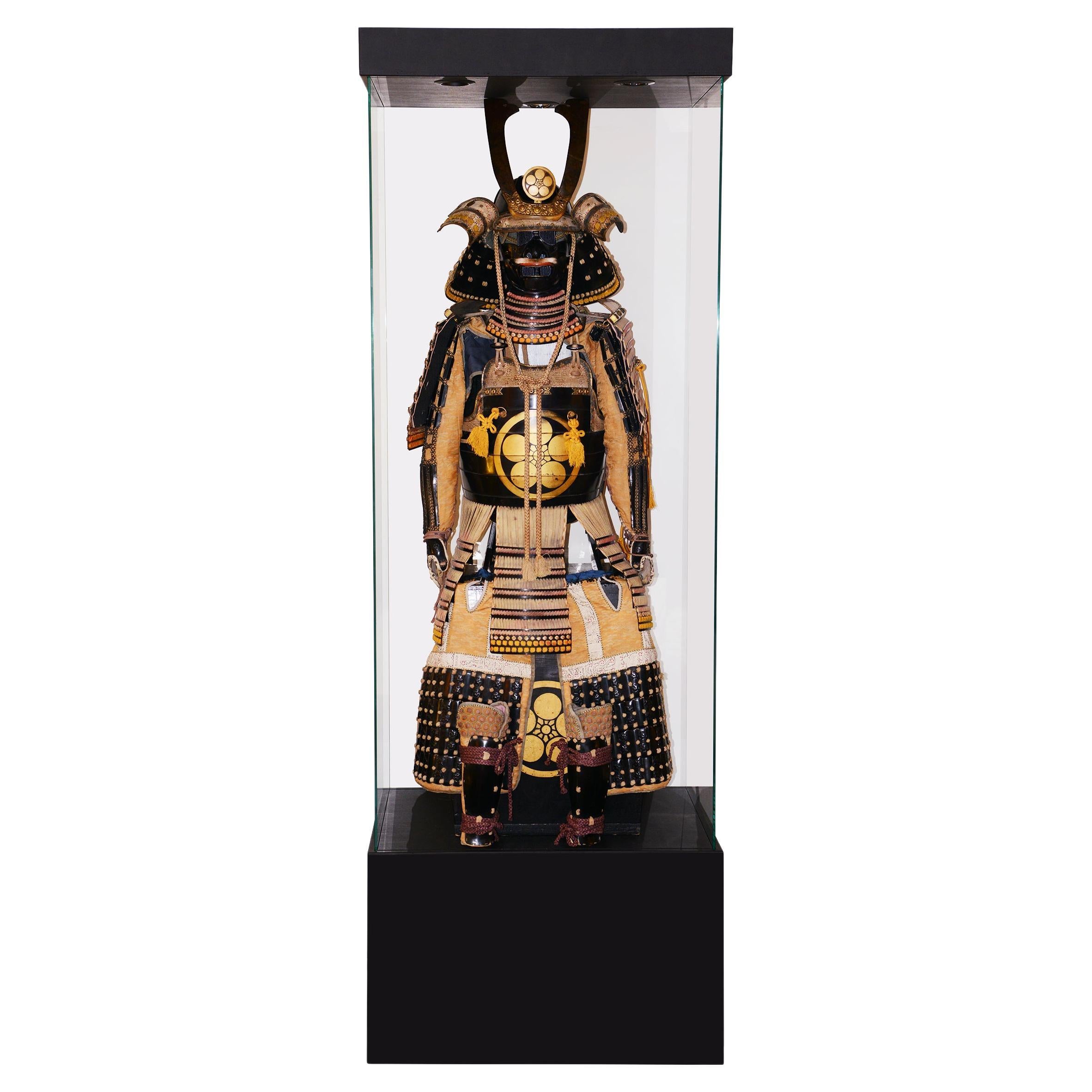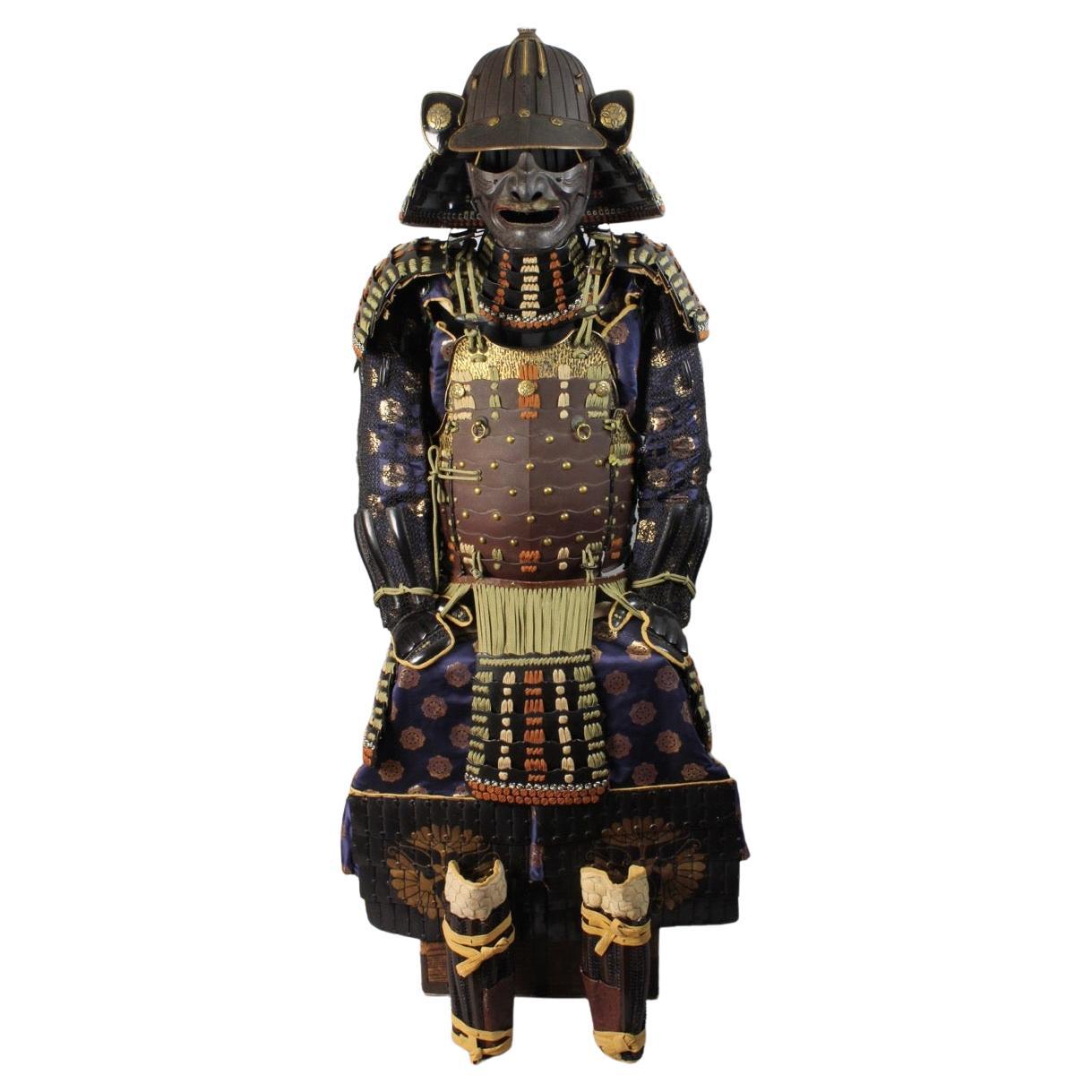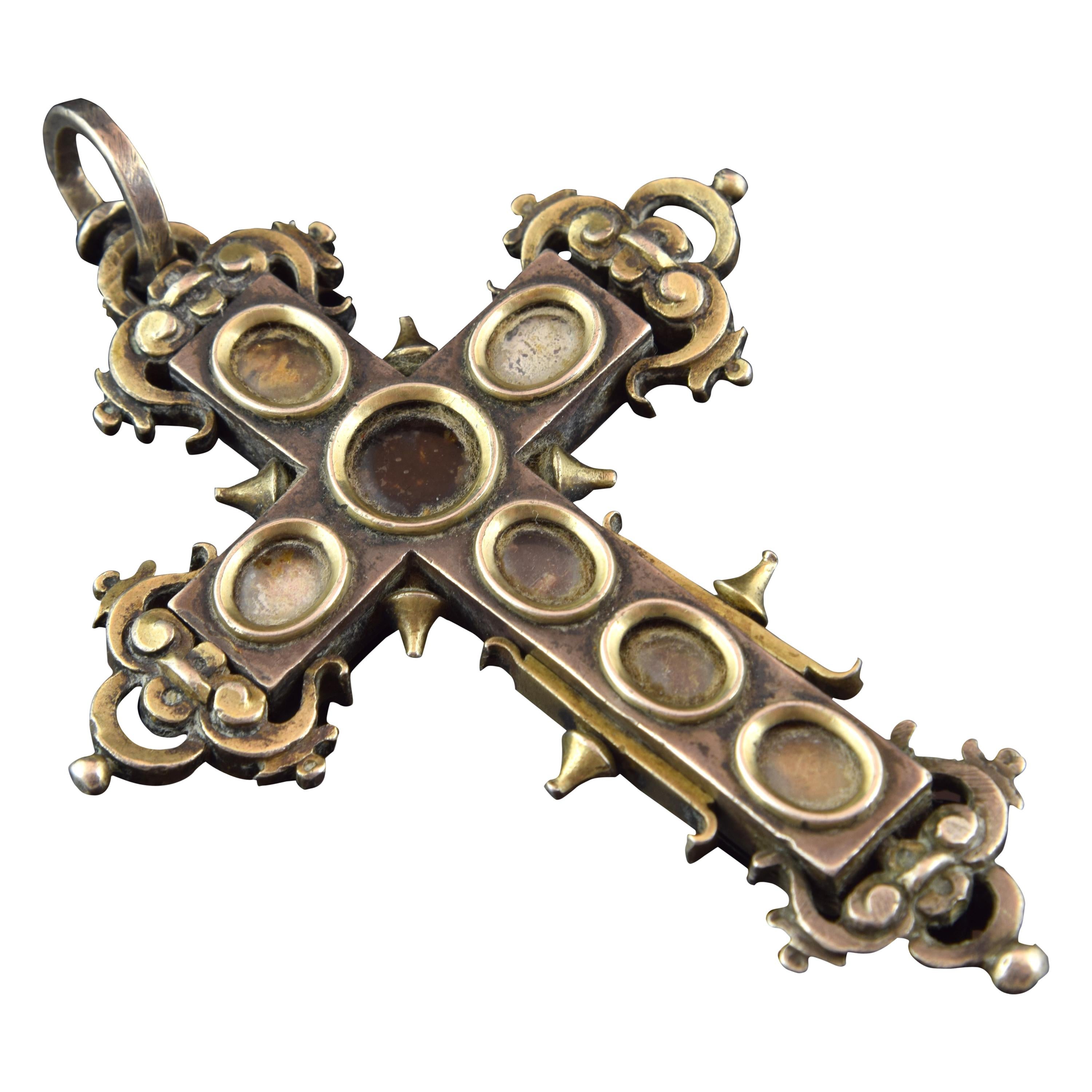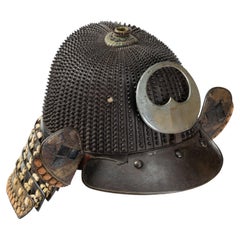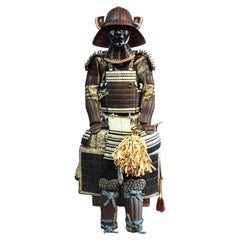
Samurai Armor with Eboshi-Nari Kabuto Tachi-dō tōsei Gusoku, 17th-18th Century
View Similar Items
Want more images or videos?
Request additional images or videos from the seller
1 of 10
Samurai Armor with Eboshi-Nari Kabuto Tachi-dō tōsei Gusoku, 17th-18th Century
About the Item
About the Seller
5.0
Recognized Seller
These prestigious sellers are industry leaders and represent the highest echelon for item quality and design.
Established in 2005
1stDibs seller since 2018
10 sales on 1stDibs
Typical response time: 2 hours
More From This SellerView All
- Go-Mai Uchidashi Dō Tosei Gusoku Samurai Armor Decorated with an Embossed RabbitLocated in Milano, ITGo-mai uchidashi do tosei gusoku Samurai armor decorated with an embossed rabbit Edo period, 19th century This samurai armor is complete and original, with consistent elements...Category
Antique 19th Century Japanese Metalwork
MaterialsIron
$38,565Free Shipping - Dangae do tosei gusoku A blue-laced samurai armor with cuirass of double styleLocated in Milano, ITDangae do tosei gusoku A blue-laced samurai armor with cuirass of double style Edo Period, 18th century Kabuto [helmet]: Black lacquered eboshi-nari kabuto, in the form of this ...Category
Antique 18th Century Arms, Armor and Weapons
MaterialsIron
- Koboshi Kabuto, Samurai Helmet with Standing Rivets Haruta SchoolLocated in Milano, ITKoboshi kabuto Samurai helmet with standing rivets Haruta School Early Edo Period, 17th century A 62-plate koboshi-bachi [helmet bowl with small s...Category
Antique 17th Century Japanese Arms, Armor and Weapons
MaterialsIron
- Hon-kozane ni-mai do tosei gusokuLocated in Milano, ITHon-kozane ni-mai do tosei gusoku Samurai armor in revival style Edo Period, 17th to 18th century Signature on kabuto: Jōshū jū Saotome Ietada Kabuto [helmet]: A russet iron (tetsu sabiji) sixty-two plate kabuto, each mounted with twenty-five small tapered standing rivets (ko-boshi) of decreasing size; the front plate, larger than the others, is fitted with two lines of rivets, while the rear one is left empty, for a total of 1.550 rivets. The typical "Saotome-byo", an extra rivet which is almost an additional signature of the Saotome armorers, is visible inside. Maedate [helmet crest]: Kuwagata (stylized horns) with shakudo kuwagata-dai (support) fitted with three hanabishi (flower-shaped family crest) and a large gilt-wood peony Menpō [mask]: A russet iron (tetsu sabiji) ressei-men (mask with fierce expression) Dō [cuirass]: Ni-mai dō (made in two parts) with hon-kozane (true scale) construction. Stencilled leather plates with engraved shakudo borders, fine pierced kanamono (application) bearing a hanabishi. Sode [shoulder guards]: Large type (ō-sode), with fine kanamono and decorations. Kote [sleeves]: In russet iron, with a hanabishi on the back of the hand (tekko). Haidate [thigh guard]: Of hakama type (full trousers), made of tied rectangular iron plates. Suneate [shin guards]: Finished in black urushi lacquer. Accessories: A saihai (commander’s baton); high-level kara-bitsu (storage box) With its large sode (shoulder guards) and old-fashioned construction, the style of the armor is reminiscent of the medieval suits...Category
Antique Late 17th Century Japanese Arms, Armor and Weapons
MaterialsIron
- Okitenugui Kabuto Samurai Helmet Shaped as a Head Towel Saika, Early Edo PeriodLocated in Milano, ITOkitenugui kabuto Samurai helmet shaped as a head towel Saika, early Edo period, 17th century The Haruta armorers who moved to Kii province in the early 17th century, took the name from the village where they worked, Saika, near Wakayama, possibly on request of the local daimyo, Asano Yukinaga, a great armour amateur. Specialised in the construction of plate helmets, they produced mainly two typologies of kabuto: one with six plates covered with a chrysanthemum-shaped plate on top and one shaped as a “head towel”, called okitenugui. The latter type of kabuto employs very heavy plates crafted in a curved manner and was improved in order to make it resistant to firearms. This okitenugui kabuto features some distinctive decorations of the Haruta school, including the application of cut-out iron elements, including eyebrows, washers and lozenge-shaped decorations on the sides. The ring on the top, however, is a rare feature and could be used to hold a small war flag.Category
Antique 17th Century Metalwork
MaterialsIron
- Samurai Mask with a Fierce Expression Ressei MenpoLocated in Milano, ITSamurai mask with a fierce expression Ressei Menpo DATE Edo period (1615 - 1867), 18th century A red lacquered high-level mask, with fierce (res...Category
Antique 18th Century Japanese Metalwork
MaterialsIron
You May Also Like
- 18th Century Hirate Clan Samurai Armor with Signed Kabuto HelmetLocated in Fukuoka, JPThis is a truly exceptional set of 18th century Samurai armor that is sure to impress any collector or enthusiast. The patinated iron used in its construction has aged beautifully, giving the armor a truly unique appearance that is sure to catch the eye. The brocade silk and cotton padding used to line the armor not only provide a comfortable fit for the wearer, but also add an extra layer of decorative flair. One of the most striking features of this armor is the crests of the Hirate samurai clan that adorn it. These crests are a symbol of the clan's identity and heritage, and their presence on the armor speaks to the deep connection between samurai warriors and the clans they belonged to. The Kabuto...Category
Antique 18th Century Japanese Antiquities
MaterialsIron
- Collection of 18th and 19th Century Arabic Astrolabes and QuadrantLocated in London, GBA collection of 18th and 19th century Arabic astrolabes and quadrant Persian, 18th/19th Century Largest: height 23cm, width 13cm, depth 3cm Smallest: height 6.5cm, width 4.5cm, depth 1.5cm This excellent set of antique astronomical instruments is a selection of five Persian brass astrolabes...Category
Antique Early 19th Century Persian Islamic Scientific Instruments
MaterialsBrass
- Samuraï Maeda ArmorLocated in Paris, FRArmor Samuraï Maeda, ceremonial armor with handcrafted helmet and protects. Made with original japanese fabrics only use for samuraï armor confection, ...Category
Vintage 1930s Japanese Arms, Armor and Weapons
MaterialsFabric, Glass
$20,862 Sale Price20% Off - 18th c(Edo period) certified samurai armor (yoroi) in exceptional st. PreservatiLocated in Fukuoka, JPElaborately made set of armor , reflecting high social status of the owner. It is appears austere and yet sophisticated with multiple gilded family crests and arabesque design on gilded copper fittings. Very fine 32 plate Kabuto helmet...Category
Antique Mid-18th Century Japanese Edo Arms, Armor and Weapons
MaterialsIron
$28,500Free Shipping - Large Himalayan Inlaid Bronze Vajra with Wrathful Faces, 15th-16th CenturyLocated in Austin, TXA large and unusual Himalayan bronze and mixed metal nine prong vajra featuring wrathful faces. In the style of the Tangut (Western Xia) Kingdom (1038 to 1227), but probably later, most likely 15th-16th century. The body of the vajra crafted from a copper alloy, with five wrathful faces on either side and gold and silver inlays to the center. The prongs crafted of iron, with each side having eight prongs arcing outwards around a central prong before coming back to a copper alloy point. The vajra is meditational tool...Category
Antique 16th Century Mongolian Metalwork
MaterialsGold, Silver, Bronze, Iron
- Reliquary Cross Pendant, Silver, Glass, 17th-18th CenturyLocated in Madrid, ESDevotional pendant made in silver with a Latin cross shape, decorated on the outside with simple scrolls, spikes, pearls and other elements of classicist inspiration, as well as a ri...Category
Antique 18th Century European Neoclassical Religious Items
MaterialsSilver
Recently Viewed
View AllMore Ways To Browse
Asian Black And Gold Decoration
Samurai China
Antique Japanese Armor
Antique Japanese Armour
Japanese Antique Armor
Edo Samurai
Samurai Armour
Samurai Armor
Japanese Samurai Armor
Antique Japanese Divider
Antique Round Lighter
Red Lace Flats
Antique Samurai Armour
Antique Samurai Armor
Armor Mask
Japanese Samurai Armour
Antique Style Fonts
Japanese Shino

